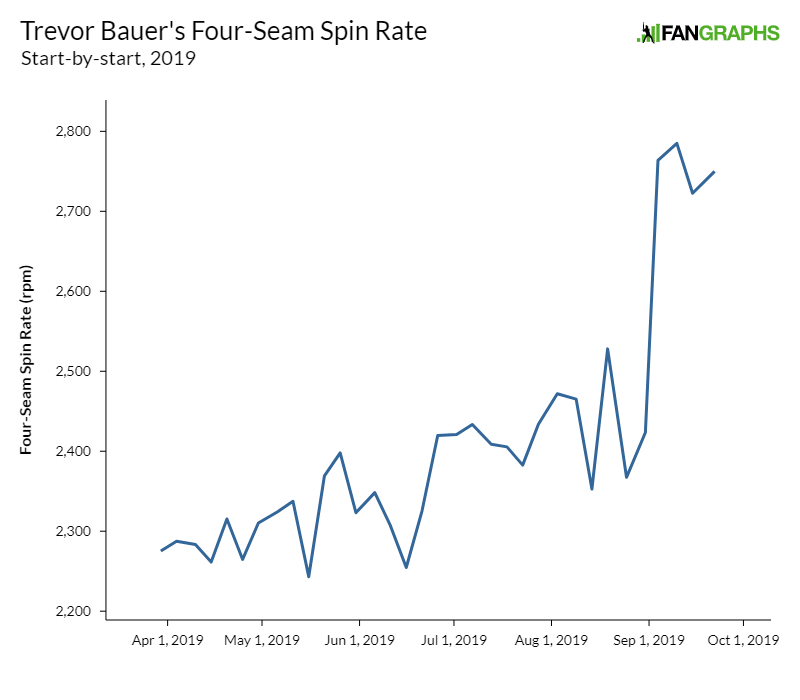Trevor Bauer Might Have Conducted Another Experiment
In April of 2018, Trevor Bauer conducted an experiment. While he never admitted it, he mysteriously threw the ball with significantly more spin for an inning. Given Bauer’s repeated insistence that adding pine tar or some other equivalent foreign substance could increase his spin rate by 200-300 rpm, and the fact that his spin rate was almost exactly 300 rpm higher in the first inning as compared to the rest, he might as well have winked.
So, uh, let’s talk about last September. The following graph is Bauer’s average four-seam fastball spin rate by game:

Now, I’m not a baseball scientist. But short of Alan Nathan and Meredith Wills and David Kagan, those are in short supply. So I thought I’d conduct a non-rigorous but still curious investigation of these September starts to see if I could get to the bottom of what happened.
Let’s get something out of the way first: my base case, before I started investigating, is that Bauer got back into the sticky stuff. The jump is just so clean, so consistent within each game, that it doesn’t look at all accidental. In a single earlier game, on August 19, Bauer seemingly discovered some spin, posting his then-highest single game average spin rate, just over 2500 rpm. For the rest of 2019, however, he lived between 2250 and 2500 rpm. Then, like magic, every single pitch Bauer threw in September had a spin rate higher than 2500 rpm.
What could cause this, if it isn’t some type of sticky substance? It’s a long shot, but maybe Bauer started cutting the pitch. What does that mean? If you already know, you can skip this section, but I’ll go over it quickly. Picture a tire rolling down the road. Now, picture that same motion by a ball in air, with no road in the way. That’s transverse spin. Picture the baseball with that tire-style spin, with the car in reverse, and you have a 100% spin efficiency fastball. Read the rest of this entry »

